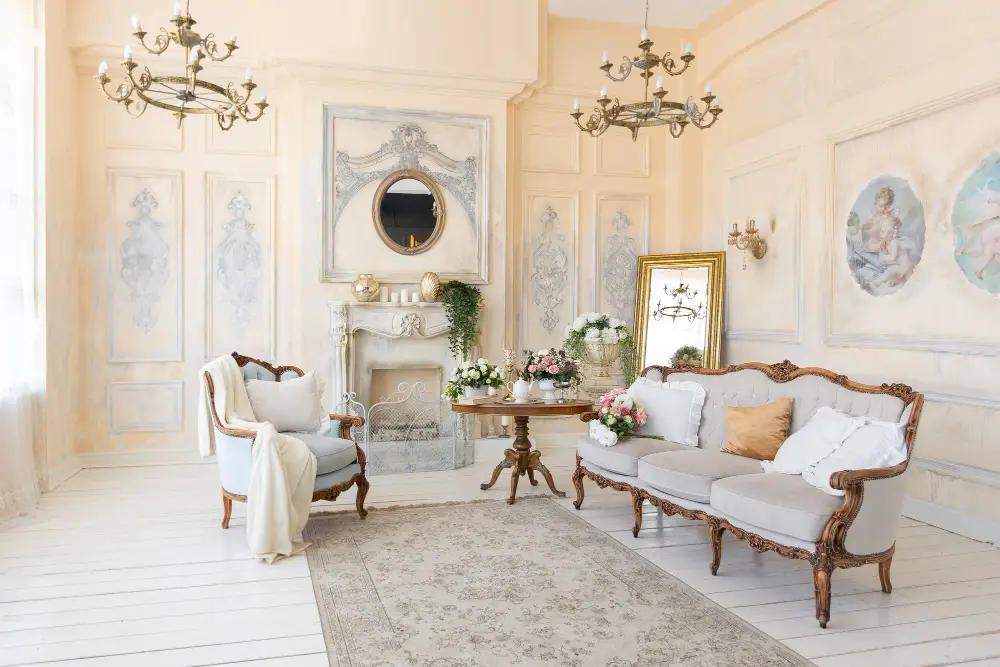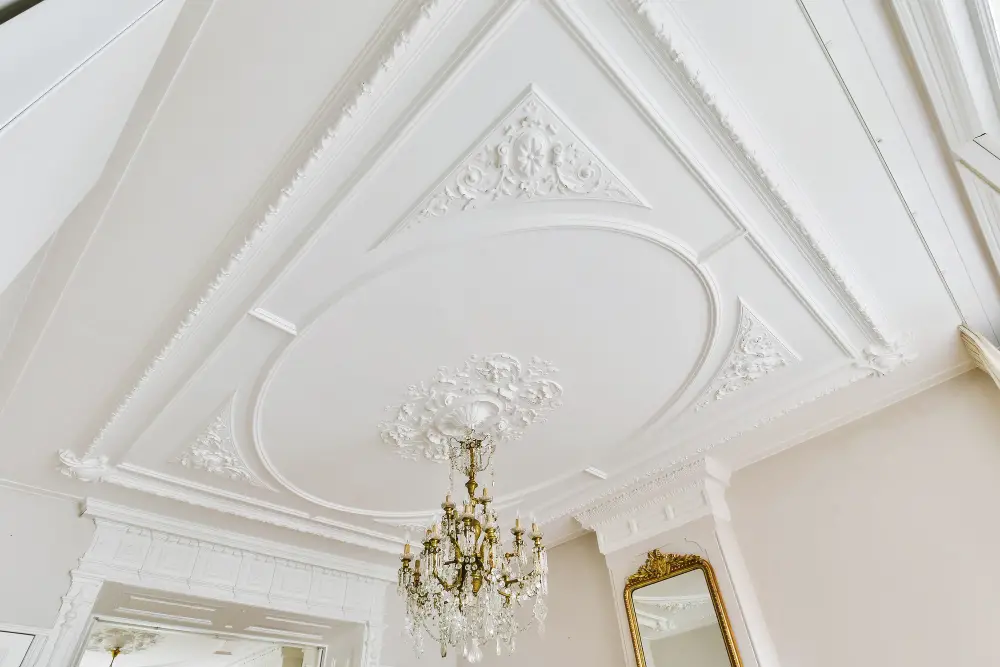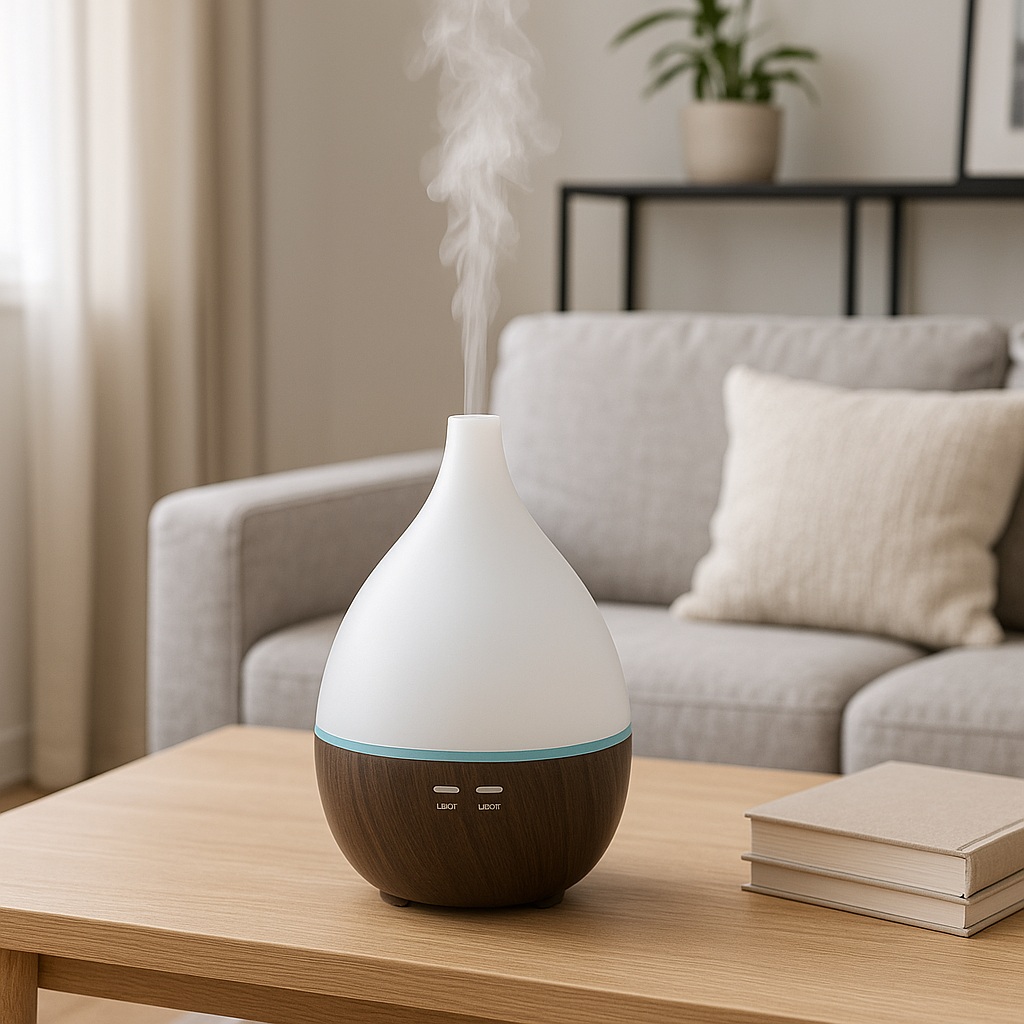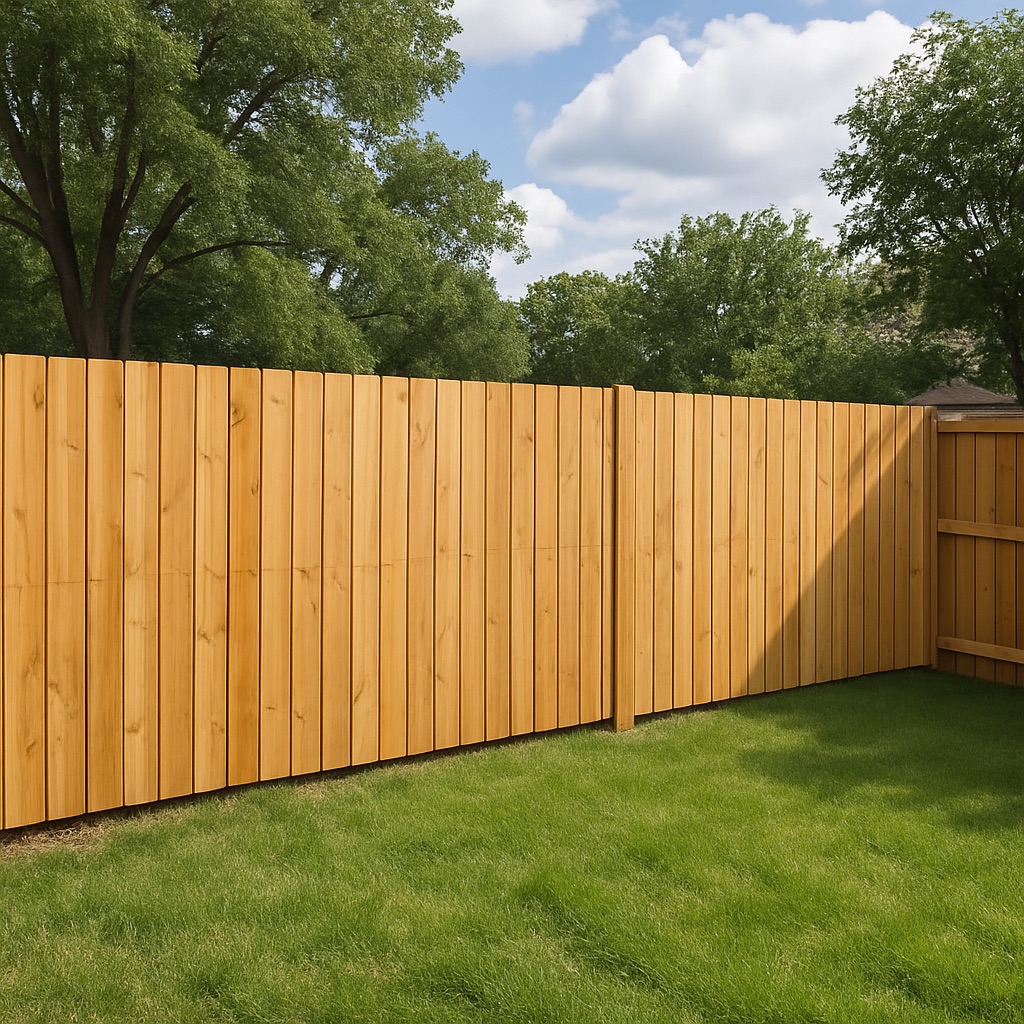Last updated on
In an era where modernity often takes center stage in interior design, there’s a timeless appeal in the classics. Traditional design, with its enduring elegance and comforting familiarity, continues to captivate homeowners who seek a sense of history and heritage within their living spaces.
Achieving a traditional design for your home involves a delicate balance of architectural details, color schemes, furniture choices, and decorative accents that transport you to a bygone era.
In this comprehensive guide, we’ll delve into the intricacies of traditional design, providing you with insights and practical tips on how to infuse your home with classic charm.
Table of Contents
Understanding Traditional Design

Traditional design is a broad and diverse style rooted in the past, primarily drawing inspiration from European design movements and American colonial heritage. It’s characterized by its timeless elegance, refined craftsmanship, and attention to intricate detailing. While the specifics of traditional design can vary significantly based on different historical periods and regions, there are some common elements that unite them:
Architectural Details
Traditional design often features architectural details like crown molding, wainscoting, and coffered ceilings. These elements add depth and character to the space, creating a sense of grandeur. Fixtures such as traditional column radiators and fireplaces can ensure a cohesive effect.
Rich Color Palette
Traditional interiors typically incorporate a rich and warm color palette. Earthy tones, deep reds, greens, and blues, along with muted neutrals, form the foundation of this style.
Classic Furniture
Furniture in traditional design is known for its graceful curves, ornate carvings, and high-quality materials like wood and leather. Pieces are often substantial and well-crafted, emphasizing durability and sophistication.
Textiles play a vital role in traditional design. Look for fabrics with classic patterns such as florals, damasks, and stripes. These are often used for upholstery, curtains, and throw pillows.
Incorporating antiques or vintage items can instantly infuse your space with history. These items are often handed down through generations, carrying with them stories of the past.
Traditional interiors tend to have a more formal layout, with a focus on symmetry and balance. Furniture is often arranged in a way that promotes conversation and a sense of cohesion.
Now that we have a better understanding of what traditional design encompasses, let’s explore how you can achieve this classic look in your own home.
Selecting the Right Color Palette

The color palette is one of the most critical elements when it comes to achieving a traditional design. Traditional interiors are known for their warm, inviting colors that create a cozy atmosphere.
Consider the following tips for selecting the right color palette:
- Neutral Walls: Start with neutral wall colors like cream, beige, or soft gray as a backdrop. These shades provide a versatile canvas for your traditional design elements.
- Rich Accent Colors: Incorporate rich accent colors such as deep burgundy, hunter green, navy blue, or a regal gold. These colors can be used for upholstery, curtains, and accent walls.
- Classic White Trim: Crisp white trim and molding can provide a striking contrast against your chosen wall colors, adding depth and architectural interest to the space.
Architectural Details and Millwork

To truly capture the essence of traditional design, consider adding or enhancing architectural details and millwork in your home. Here are some ideas to get you started:
- Crown Molding: Install crown molding along the ceiling to create an elegant transition between the walls and ceiling.
- Wainscoting and Chair Rails: Wainscoting and chair rails can be used in dining rooms and hallways to add texture and visual interest to the lower portion of the walls.
- Coffered Ceilings: If you have high ceilings, consider adding coffered ceilings for a touch of grandeur. The coffered design adds depth and dimension to the ceiling.
- Paneled Walls: Installing paneled walls, also known as beadboard or shiplap, in certain rooms can create a timeless look that’s reminiscent of classic cottages and country homes.
Furniture Selection and Arrangement

The furniture you choose plays a significant role in achieving a traditional design. Here’s how to approach it:
Look for furniture pieces with classic silhouettes, such as rolled arms on sofas and wingback chairs. These designs have stood the test of time and are emblematic of traditional style.
Traditional design values quality over quantity. Invest in well-crafted, timeless pieces that will last for generations.
Arrange furniture symmetrically when possible. This fosters a sense of balance and harmony in the room.
Traditional Tables
Opt for coffee tables and end tables with elegant details like turned legs or cabriole legs. These pieces contribute to the overall traditional aesthetic.
Window Treatments and Textiles
Textiles and window treatments are essential for adding warmth and softness to a traditional interior:
Heavy Draperies
Consider heavy draperies with classic patterns, like floral or damask, in rich colors. These can be used to frame windows and add a touch of opulence.
Plush Upholstery
Upholstery should be comfortable and inviting. Consider using luxurious fabrics like velvet or silk for sofas and chairs.
Accent Pillows
Decorative throw pillows with intricate patterns can be used to tie the room’s color scheme together and add visual interest to seating areas.
Decor and Accessories
To complete your traditional design, focus on carefully curated decor and accessories:
Antiques and Vintage Finds
Incorporate antique furniture, vintage mirrors, or heirloom pieces to infuse your home with history and character.
Classic Artwork
Choose traditional artwork, such as oil paintings, portraits, or landscapes, to adorn your walls. Elegant frames can enhance the overall look.
Chandeliers and Sconces
Consider installing chandeliers or wall sconces with ornate designs to create a warm and inviting ambiance.
Traditional Rugs
Rugs with intricate patterns, such as Persian or Oriental rugs, can anchor a room and add a sense of tradition.
The Takeaway
Achieving a traditional design for your home is a journey back in time, a homage to the enduring beauty of classic aesthetics. By paying attention to architectural details, selecting a rich color palette, choosing classic furniture, and incorporating vintage accents, you can create a space that exudes timeless elegance and charm.
Traditional design offers a retreat from the hustle and bustle of the modern world, inviting you to savor the comfort of the past while enjoying the present. Embrace the warmth and sophistication of traditional design, and transform your home into a sanctuary of enduring style.




